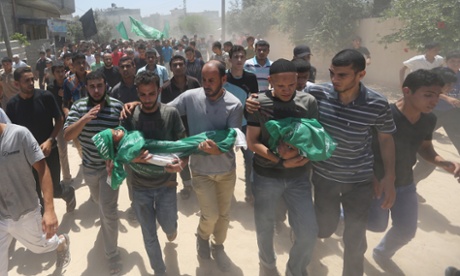The Gaza-Israel Conflict: An Overview and Summer Update

Firing of missiles has led to thousands of casualties in both Israel and Gaza over the past several years.
September 30, 2014
For over 45 years, Gaza (also known as the Gaza strip) has been under Israeli military occupation. In 2005, they withdrew their military from these isolated 139 square miles and also dismantled several settlements they had very close to the Gaza strip. Although Israel has controlled Gaza’s borders for years, the country has no military presence inside the exclave. In 2006, Hamas, an Islamic extremist group disagreeing with Israel’s right to exist (also considered to be a terrorist group by most Western and some Arab countries) won the general election in Gaza. Since then, both sides have continued to fire rockets and weaponry at each other, constantly increasing the tension between both sides. Despite their tiny land presence, Hamas receives extensive support of weapons and funds from Iran, whose government shares Hamas’ anti-Israeli ideology.
In the past 13 years, the nation of Israel, especially the towns and kibbutzim near the Gaza strip, has been defending itself from countless amounts of rockets. Early this July, the situation had escalated even further; over the past few months rockets aimed at civilians have been fired by Hamas further into the densely populated areas around Tel Aviv and Jerusalem. Israel declined to retaliate at first, but two weeks later, Israel eventually began returning the attacks with air force bombing (towards the areas where rockets were being launched) and ground forces. Upon entering Gaza by ground, Israeli troops discovered an underground web of tunnels going to deep into Israel. Hamas has continued to use Gaza’s impoverished civilian population to protect important bases. The group has been launching rockets from schools, hospitals, and mosques with the knowledge that retaliation from Israel would lead to civilian deaths and bad publicity.
The violence isn’t solely limited to one side of the conflict; people of Gaza have suffered terrible casualties (over 2,000 fatalities so far, including children), and many buildings in Gaza have been destroyed by Israeli attacks. Events this summer have established that Hamas has been in financial and power crises as well. It has been very difficult to achieve a continuous cease-fire throughout the years of conflict, but after three weeks of fighting, a fragile cease-fire has been currently issued with the help of Egypt, and peace talks are ongoing.


